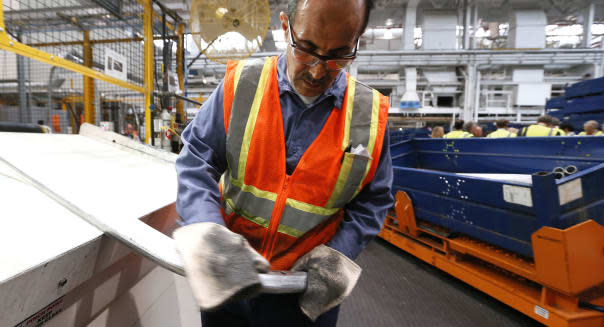Factory Output Rises, But Auto Production Declines

By Lucia Mutikani
WASHINGTON -- U.S. manufacturing output rose in October, but a third straight month of declines in motor vehicle production hinted at some slowing in the pace of factory activity.
Still, manufacturing remains sturdy, with other data Monday showing a rebound in activity in New York State this month.
"This is consistent with our outlook for continued manufacturing expansion in the fourth quarter, though at a more subdued pace than in recent months," said Jesse Hurwitz, an economist at Barclays in New York.
%VIRTUAL-WSSCourseInline-876%Factory production increased 0.2 percent last month, the Federal Reserve said. September's increase in factory output was revised down to 0.2 percent from 0.5 percent.
Motor vehicle output fell 1.2 percent in October. That followed September's 1.9 percent drop and was the third consecutive month of declines.
The modest gains in manufacturing output support views of a moderation in the pace of economic growth in the fourth quarter after a brisk expansion in the July-September period.
In a separate report, the New York Federal Reserve said its Empire State general business conditions index rose to 10.16 in November from a reading of 6.17 in October. A reading above zero indicates expansion.
New orders rebounded strongly, but factory labor gauges declined, taking some shine off the report. Businesses, however, were very upbeat about the future.
An index for future general business hit its highest level since January 2012 and a measure of capital expenditure posted its highest reading in more than two years.
"This suggests that companies are increasingly looking to invest in additional plants and equipment, a factor which should help support GDP growth during the coming quarters," said Gennadiy Goldberg, an economist at TD Securities in New York.
Last month, mining output dropped 0.9 percent, while utilities production fell 0.7 percent.
Those declines eclipsed the gains in manufacturing output, leaving overall industrial production slipping 0.1 percent in October. September's increase in industrial output was revised down to 0.8 percent from 1.0 percent.
Overall industrial capacity use fell to 78.9 percent from 79.2 percent in September. It was 1.2 percentage points below its long-run average.
Officials at the Fed tend to look at capacity use as a signal of how much "slack" remains in the economy and how much room there is for growth to run before it becomes inflationary.
